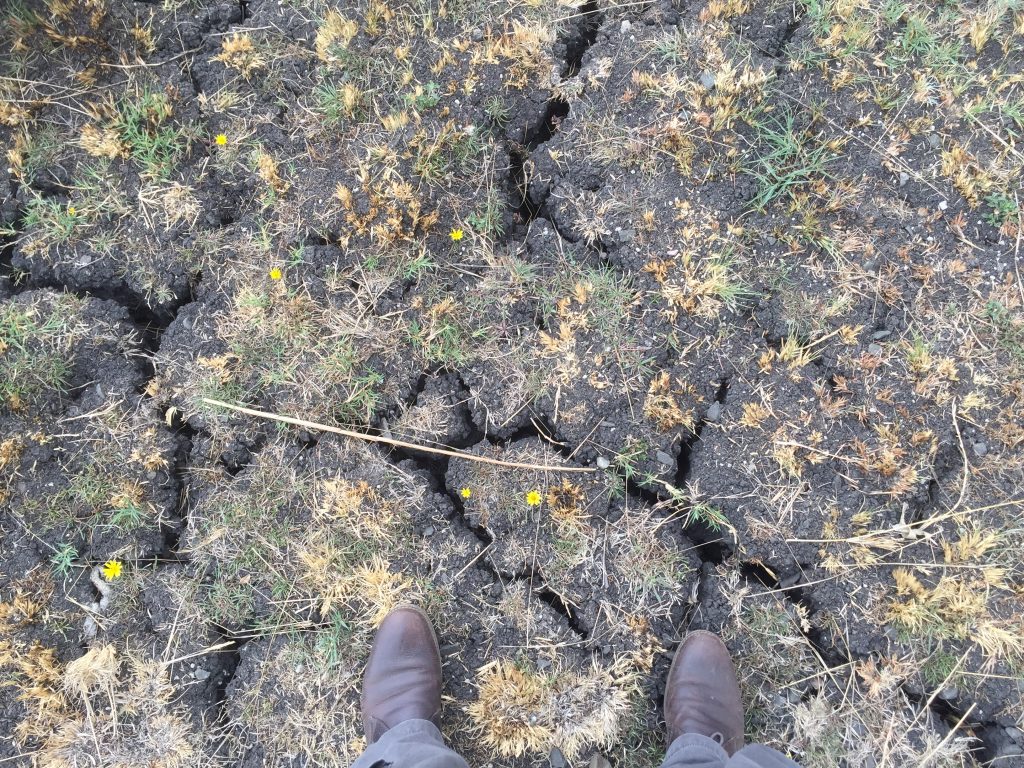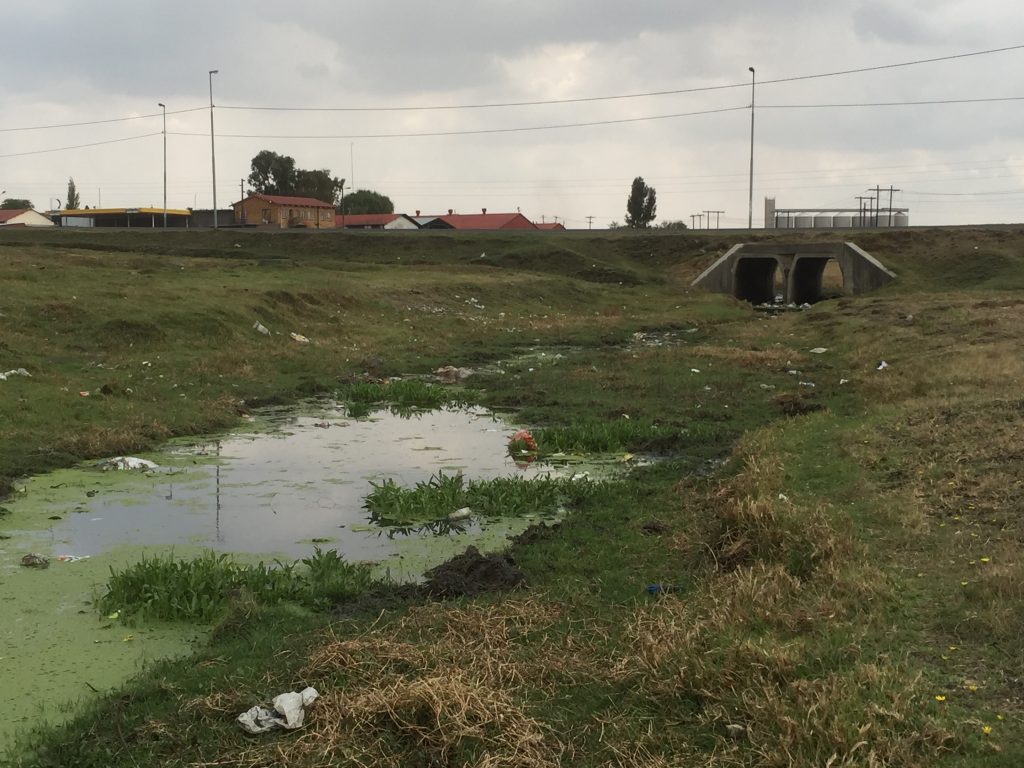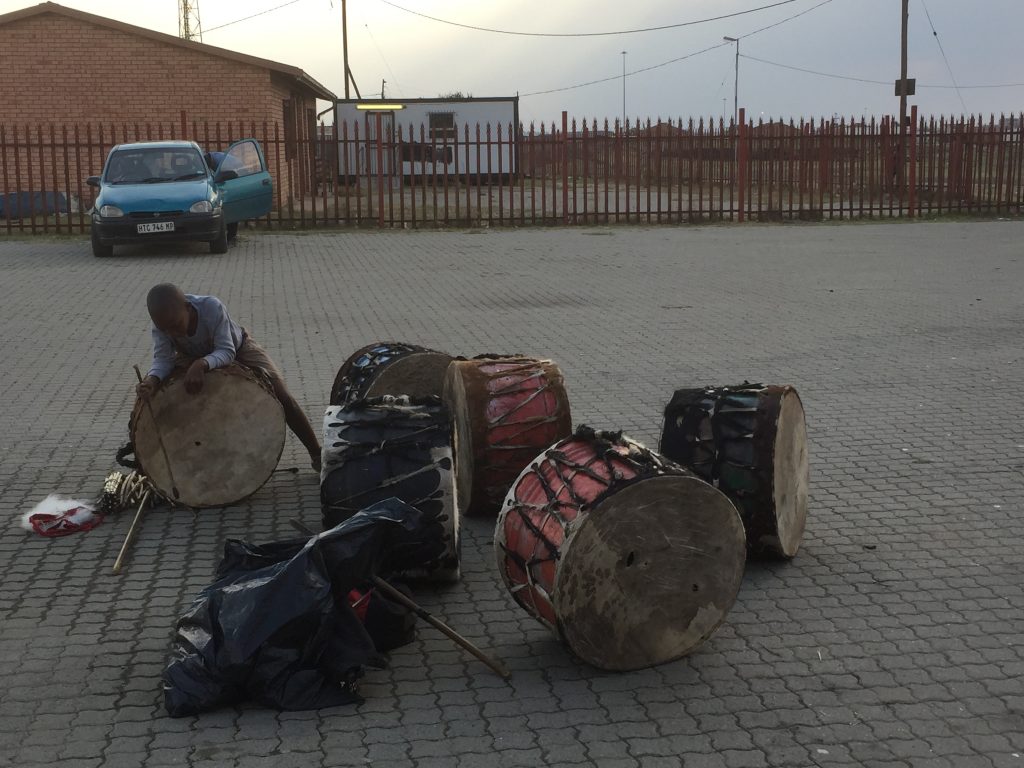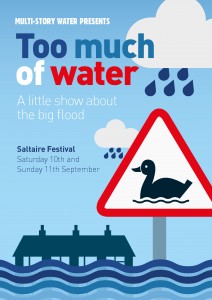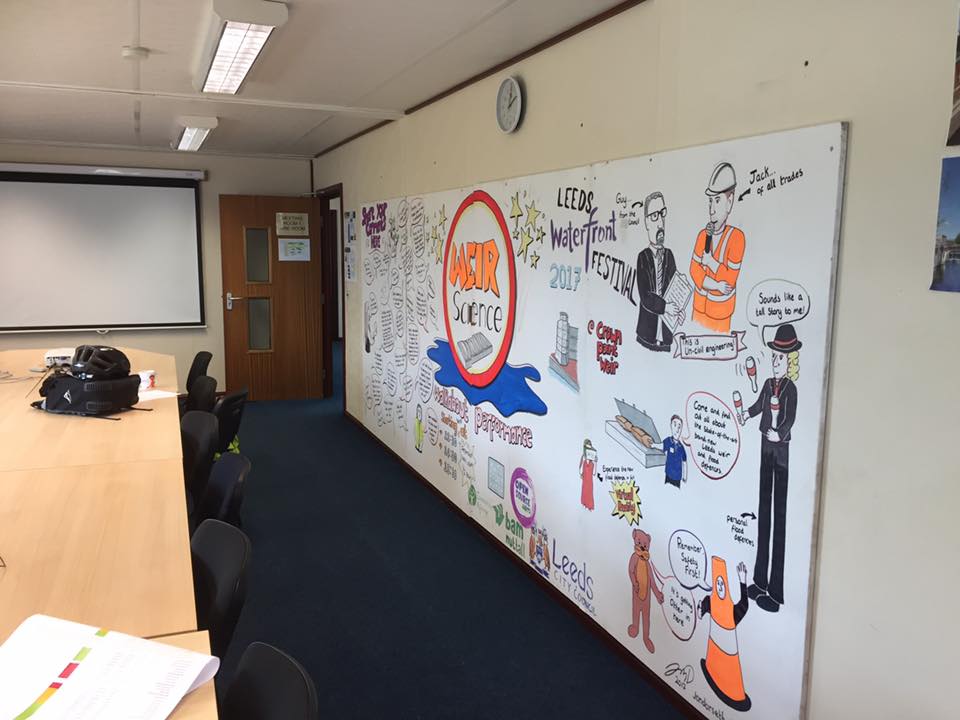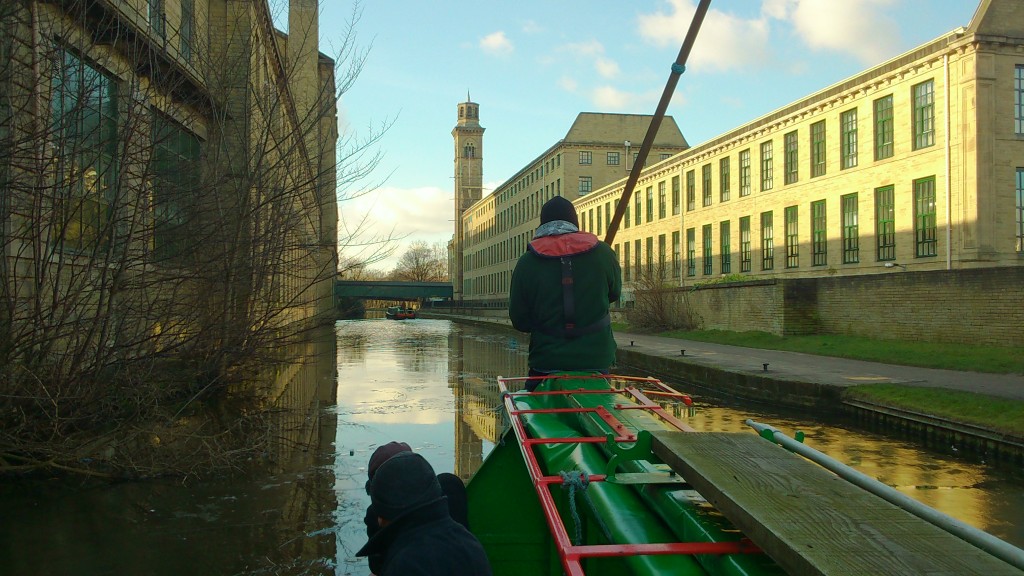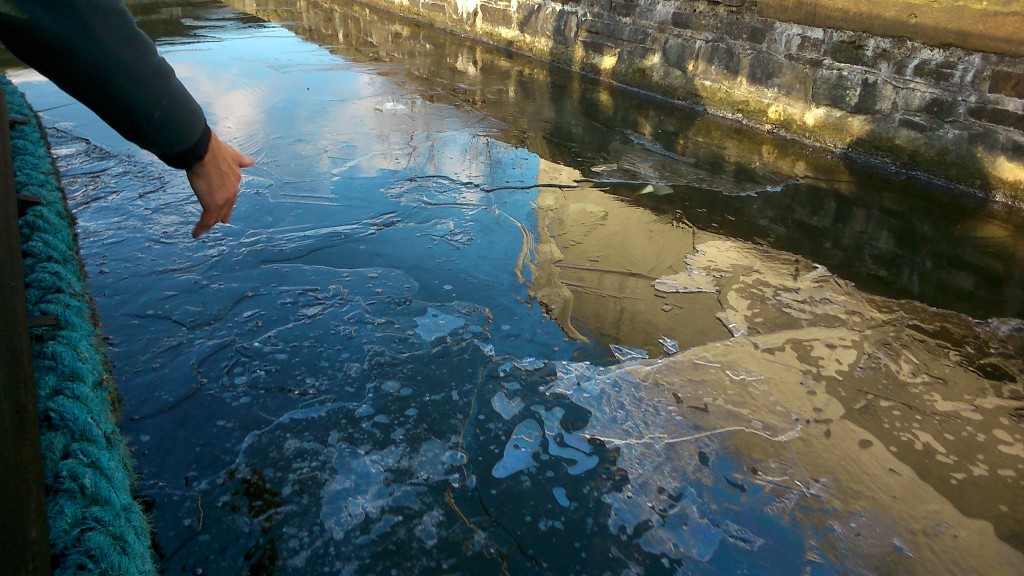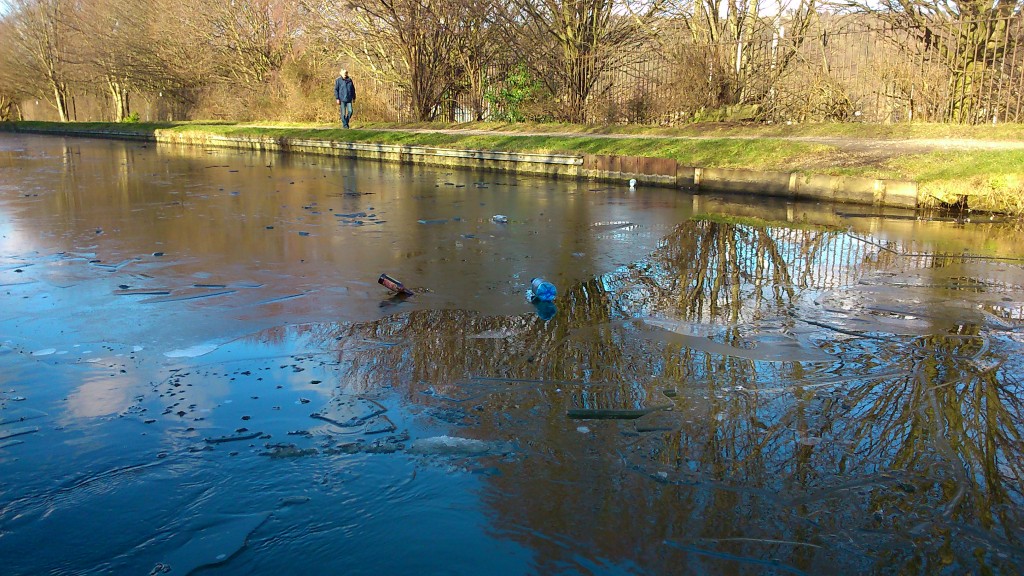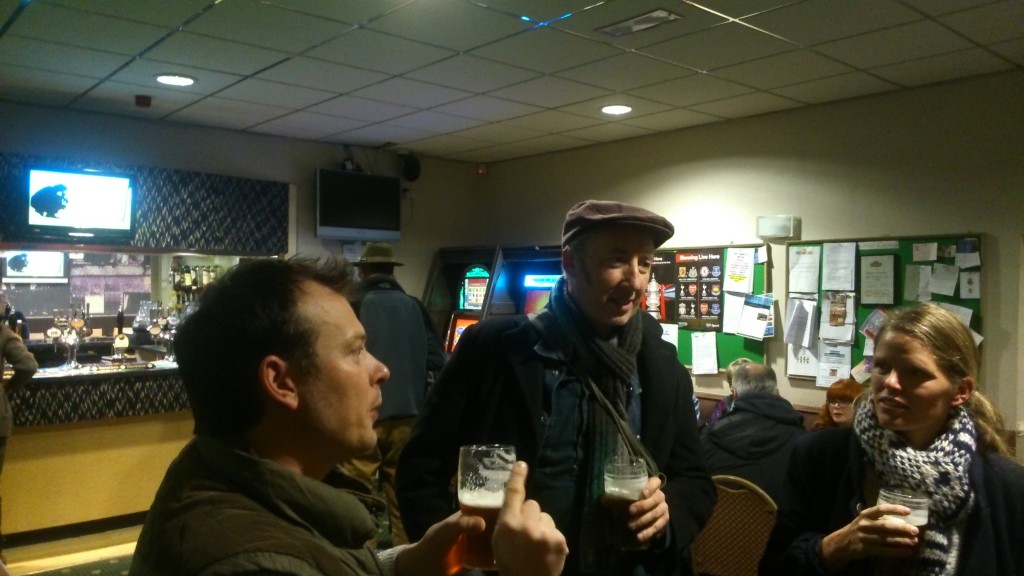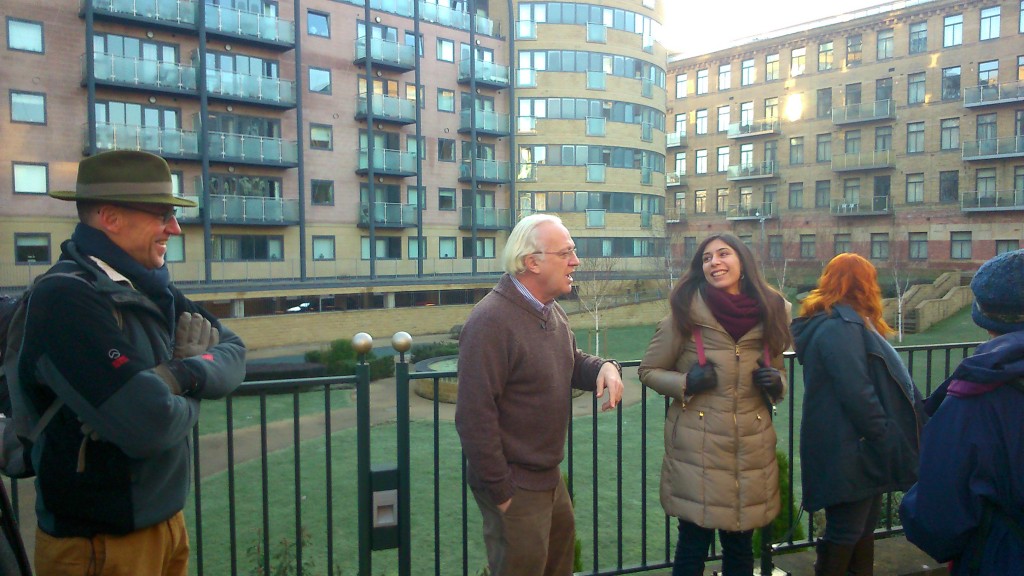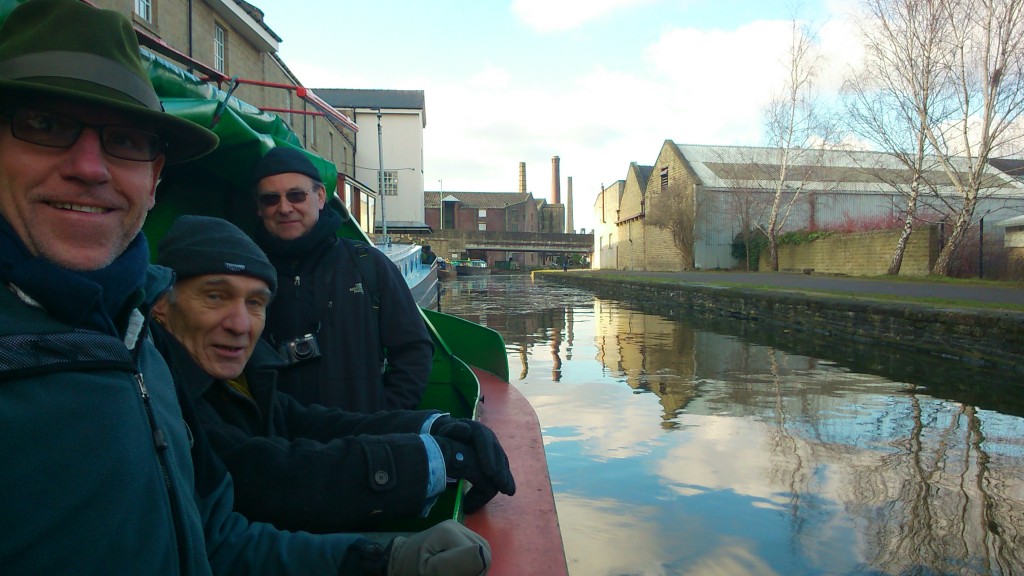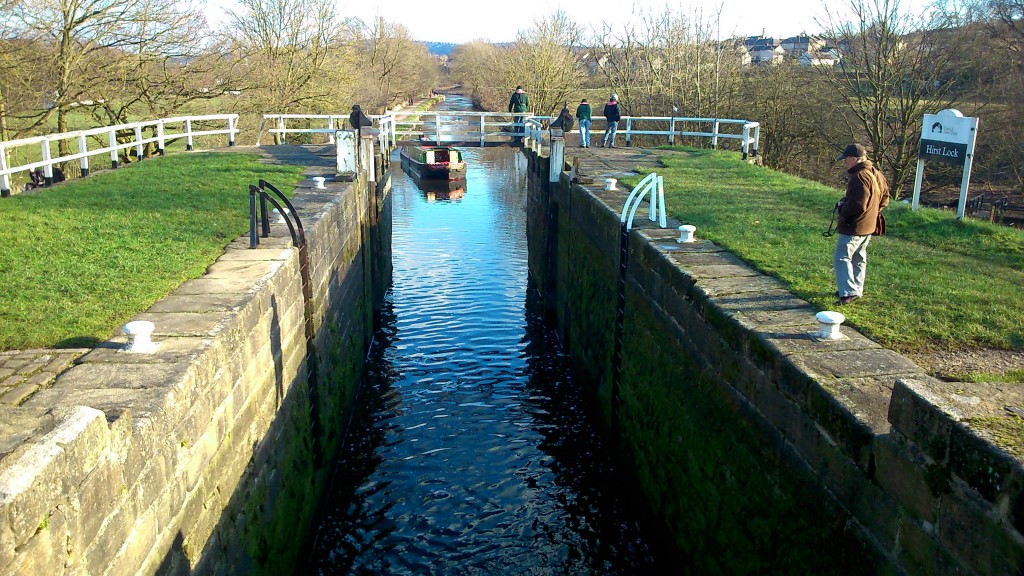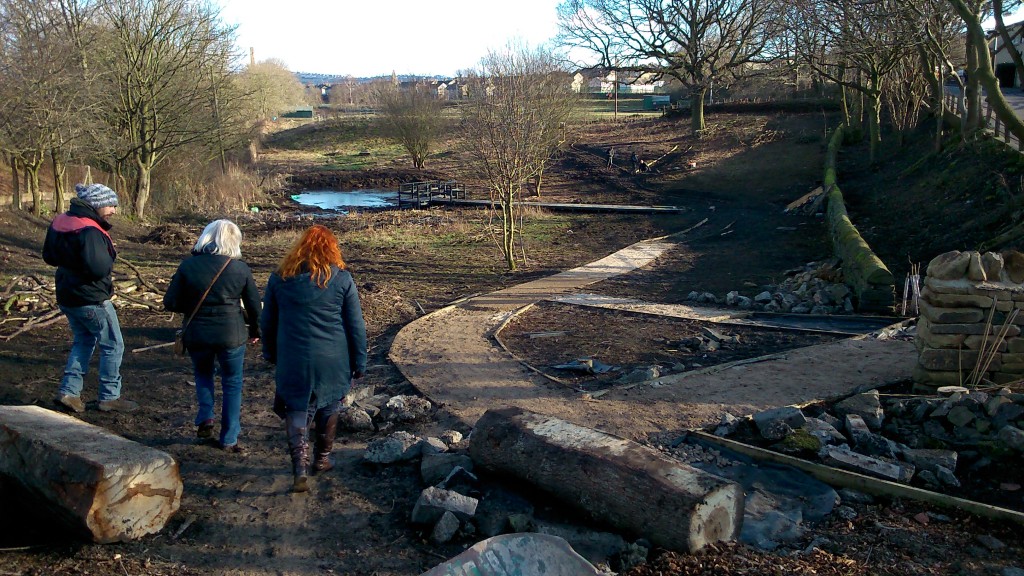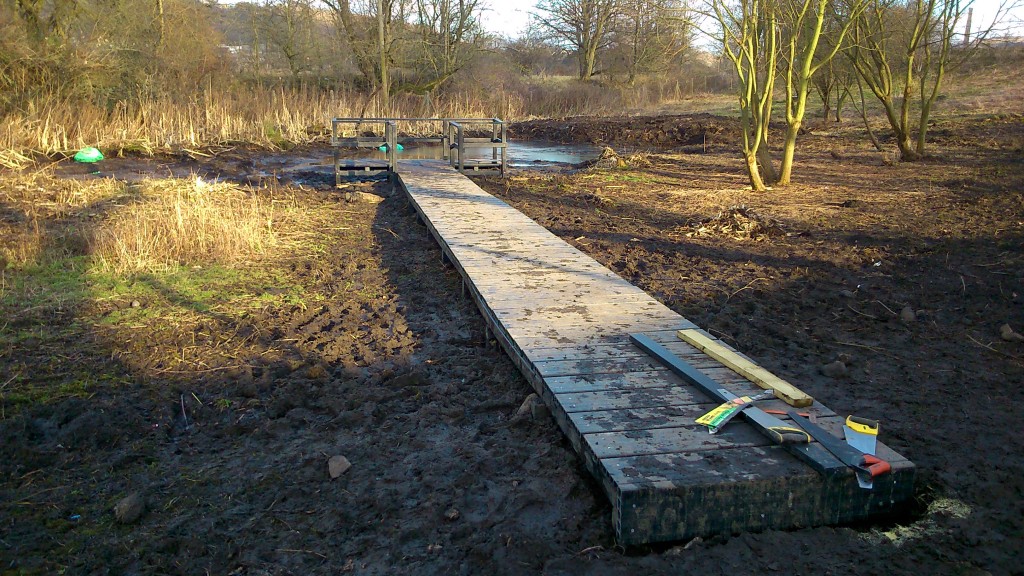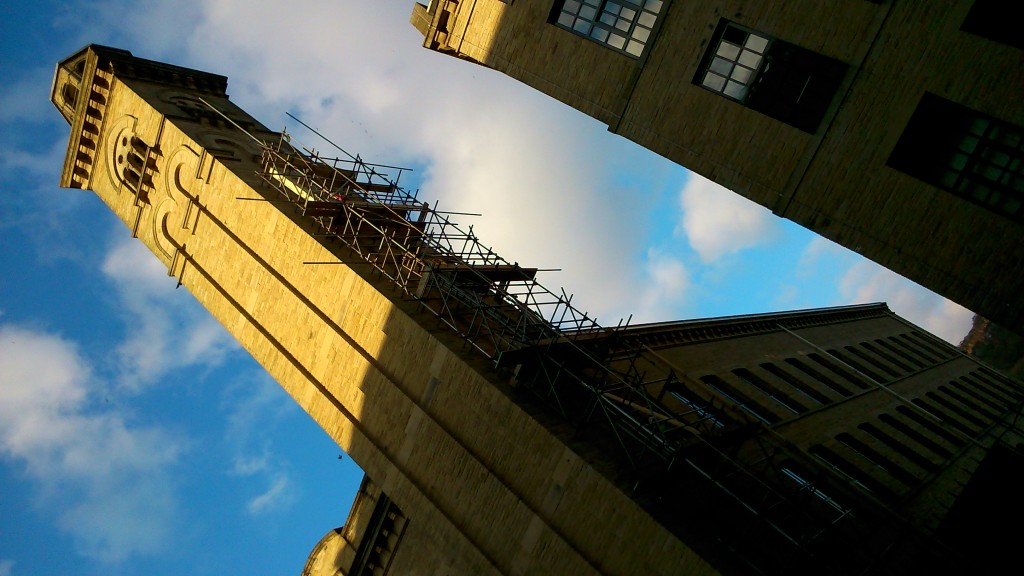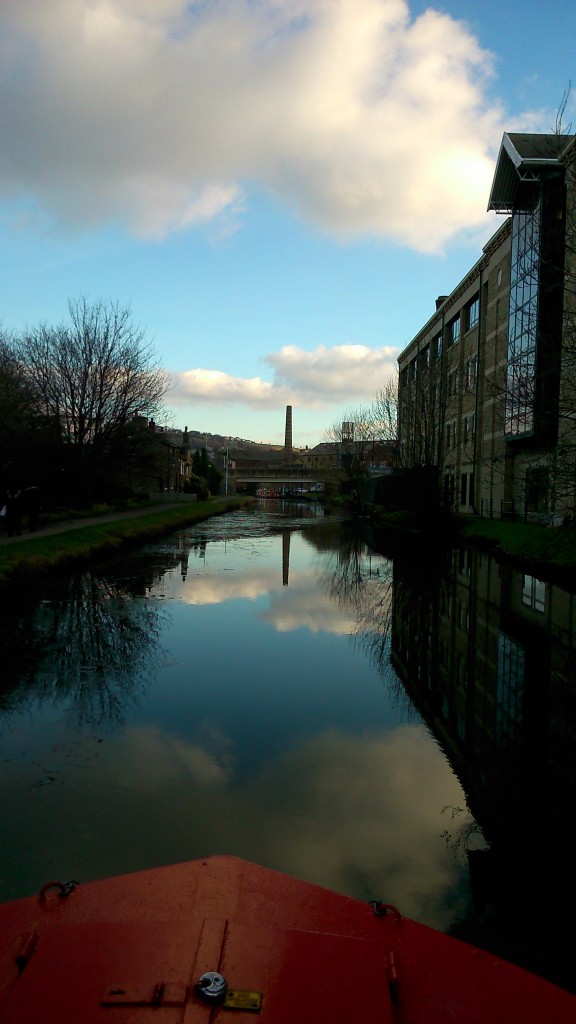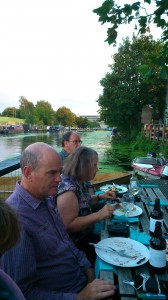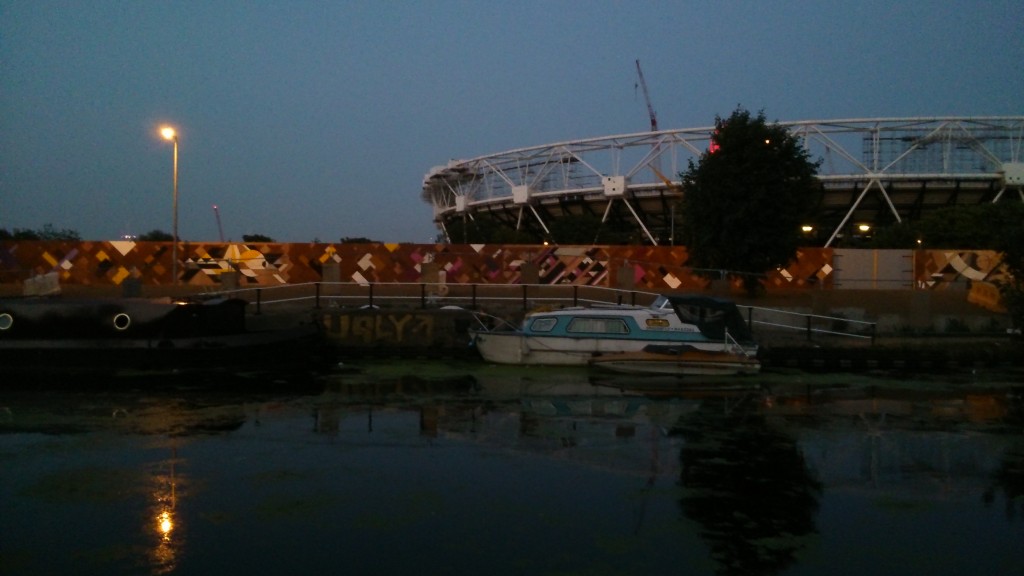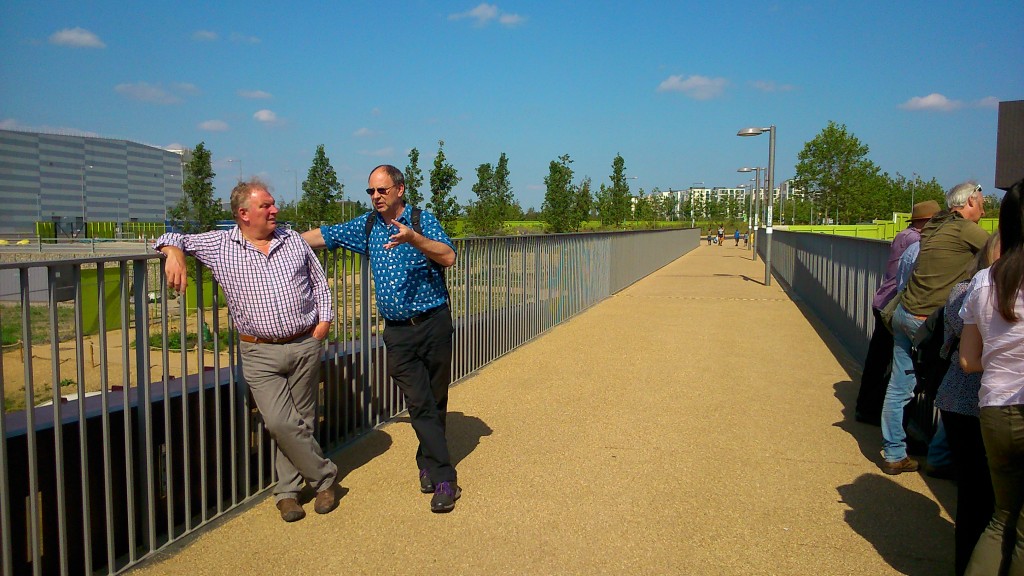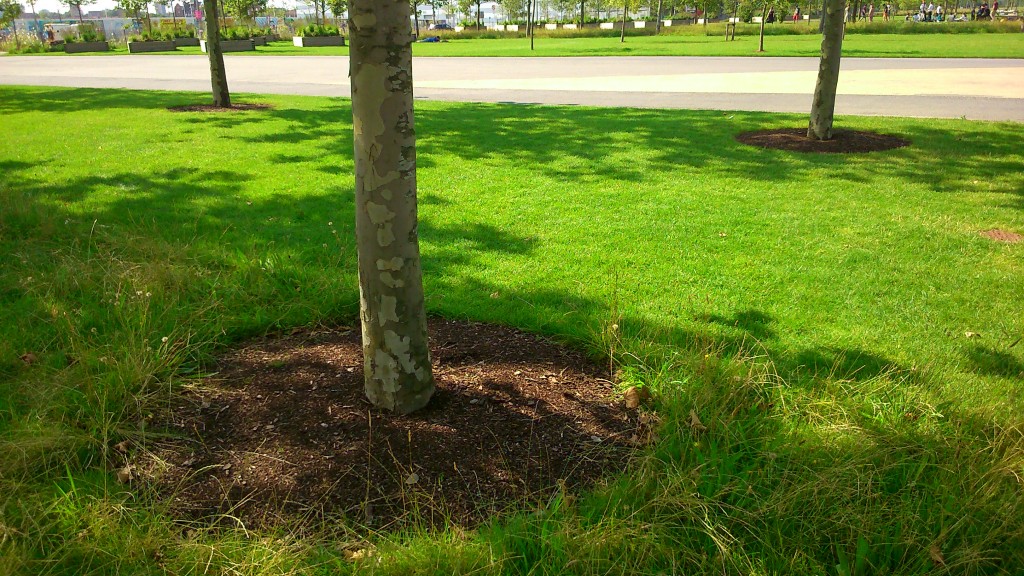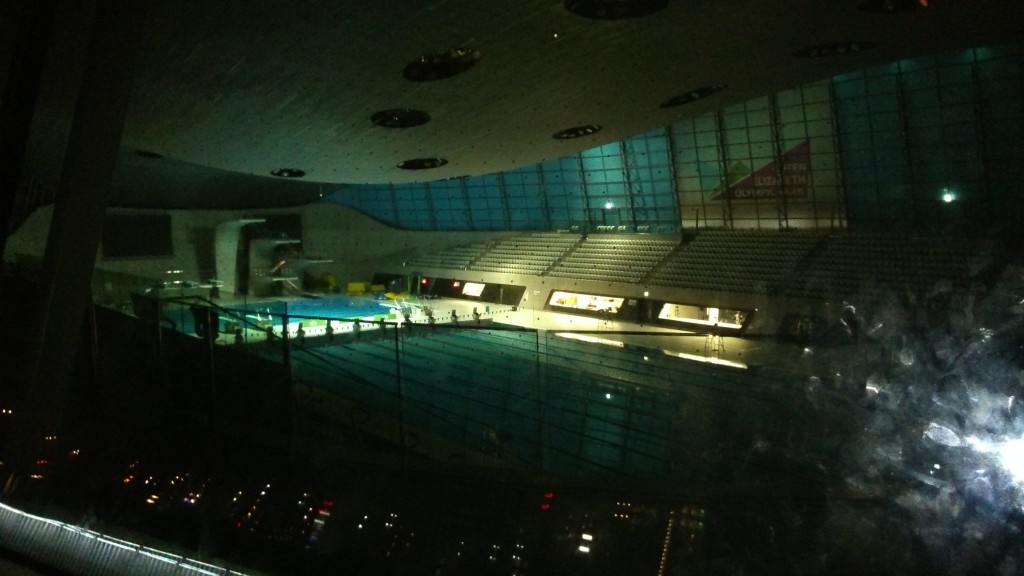As I write this, I’m sitting in a hotel room in Pretoria — once the capital of apartheid. The Multi-Story Water project has taken me to many, varied places over the last few years — mostly without needing to leave Shipley — but this week it’s brought me all the way to South Africa. I’ve been invited, as an observer, to join an expedition run by a related research project (“Patterns of Resilience”), which has also been looking at the relationship between water and community — only this time in a town threatened by drought, rather than flood. Strange as it might sound, I want to suggest in this blog that, in addition to the glaring differences between these research contexts, there are also some odd similarities…
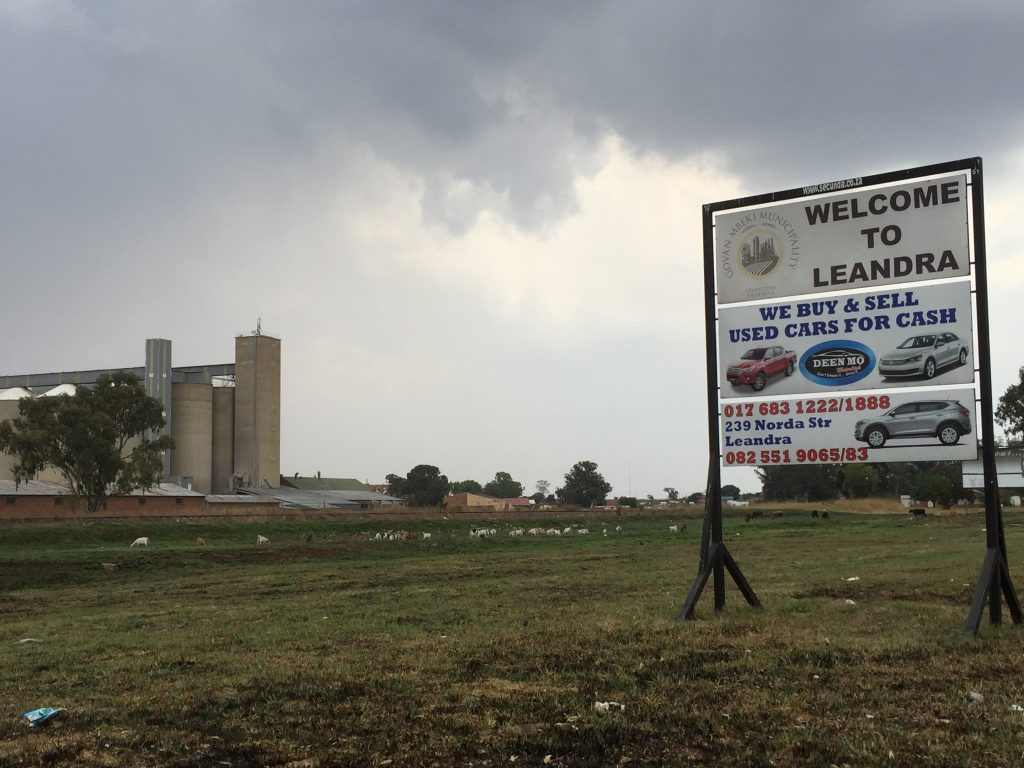 The location for this research has been Leandra, a township in the Govan Mbeki region (a couple of hours from Pretoria and Johannesburg). As you drive into town, passing this welcome sign, you come immediately to another hoarding warning residents and visitors to save water.
The location for this research has been Leandra, a township in the Govan Mbeki region (a couple of hours from Pretoria and Johannesburg). As you drive into town, passing this welcome sign, you come immediately to another hoarding warning residents and visitors to save water.
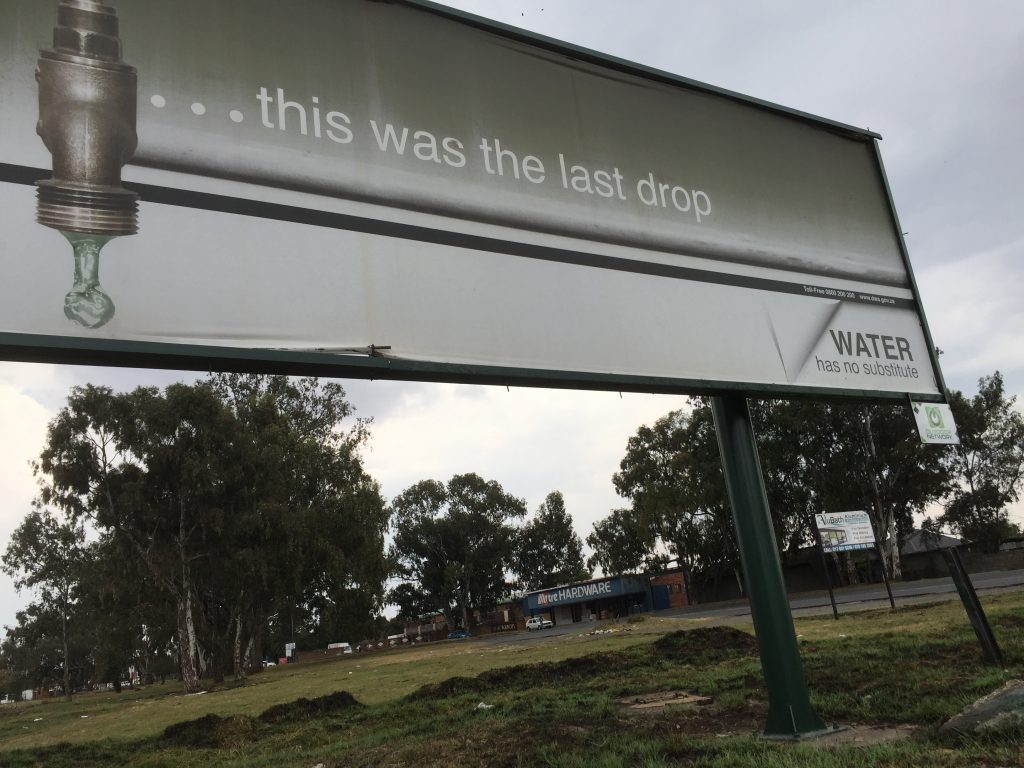 “What if … this was the last drop?” is a question that, thankfully, I’ve never had to ask myself living in the UK. But it’s a very real issue in Leandra: we arrived on a cloudy day which briefly turned rainy (complete with thunder and lightning), but in 2015-16 they had a significant drought period that impacted severely on the community.
“What if … this was the last drop?” is a question that, thankfully, I’ve never had to ask myself living in the UK. But it’s a very real issue in Leandra: we arrived on a cloudy day which briefly turned rainy (complete with thunder and lightning), but in 2015-16 they had a significant drought period that impacted severely on the community.
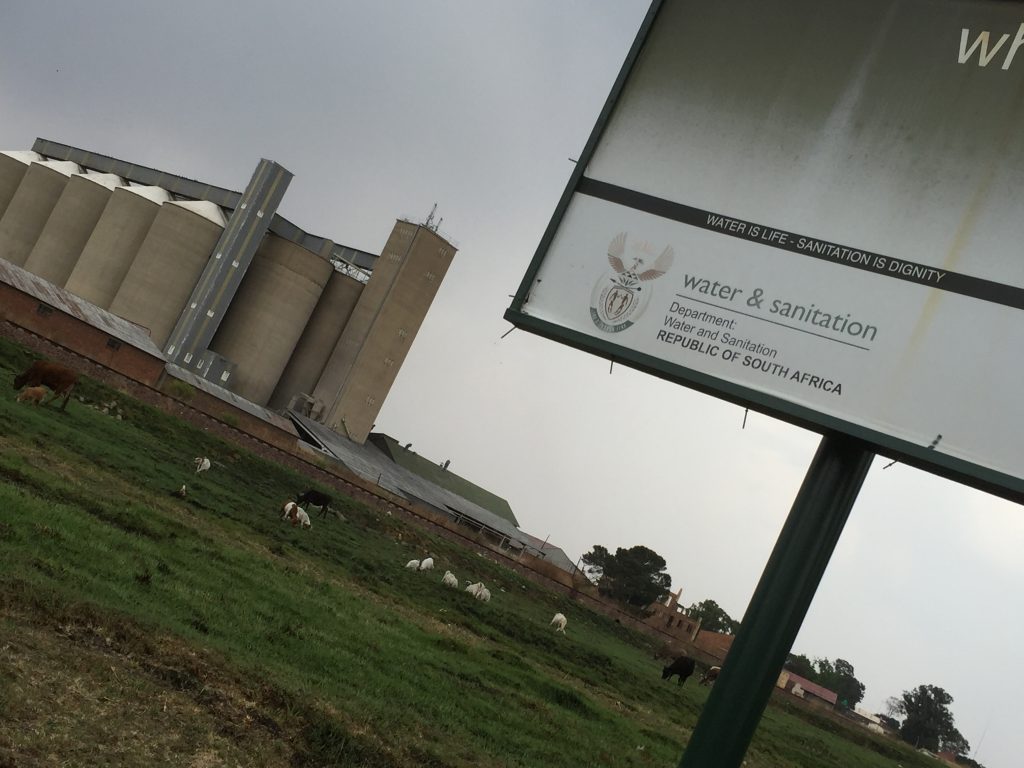 “Water is life – sanitation is dignity”, reads the small print on the poster. But life and dignity are impacted by more than just water shortage when water is short here. This is a predominantly rural area, whose residents traditionally survived through subsistence farming. Nowadays, what with industrialisation and globalisation, the farms have become big commercial enterprises – with giant maize silos like the ones you see here. In drought conditions, workers on the farms and at the silos simply get laid off because there is not enough work for them to do. And that leaves them unable to buy the food supplies that they would once have grown for themselves…
“Water is life – sanitation is dignity”, reads the small print on the poster. But life and dignity are impacted by more than just water shortage when water is short here. This is a predominantly rural area, whose residents traditionally survived through subsistence farming. Nowadays, what with industrialisation and globalisation, the farms have become big commercial enterprises – with giant maize silos like the ones you see here. In drought conditions, workers on the farms and at the silos simply get laid off because there is not enough work for them to do. And that leaves them unable to buy the food supplies that they would once have grown for themselves…
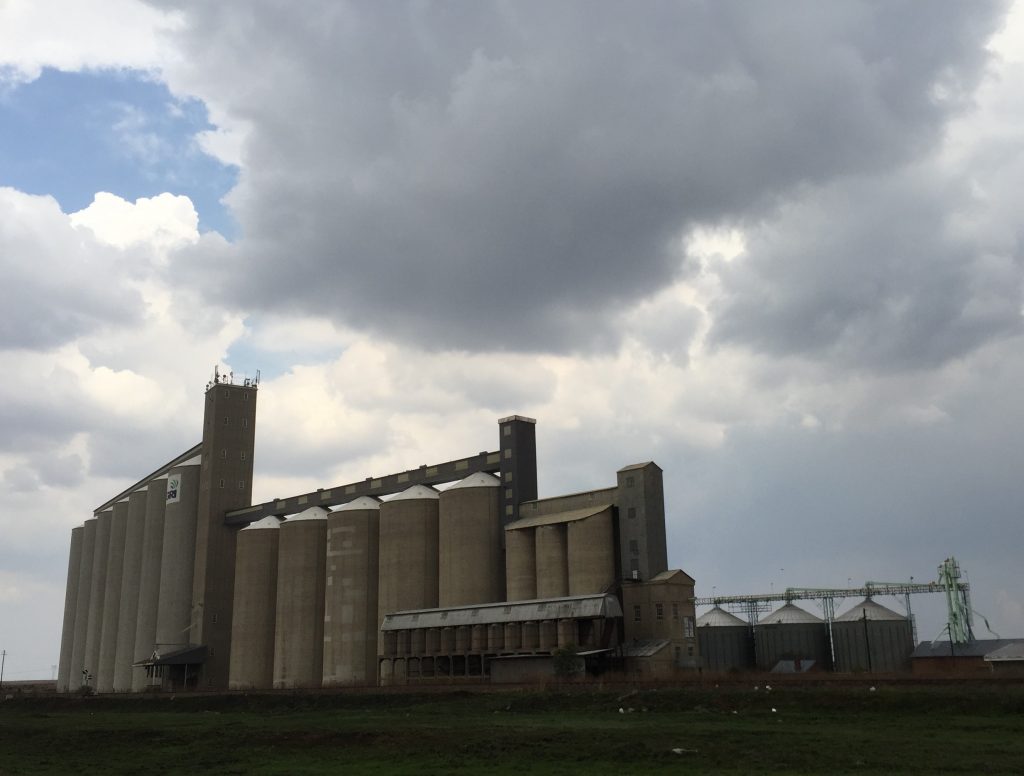
The research in Leandra has established that, although the recent drought was less severe in strictly physical terms (i.e. low rainfall) than some previous recorded droughts, the community experienced it as more acute than in the past. That is, they have in some ways become less resilient as a consequence of this greater dependence on a buying economy. In the past, families knew how to save emergency supplies of maize from their subsistence farming, for use in times of scarcity. The stored maize might have tasted sour, one man told me, but at least it was edible. But when you’ve become accustomed to simply buying in bulk from your local Spar, then when it’s gone, it’s gone…
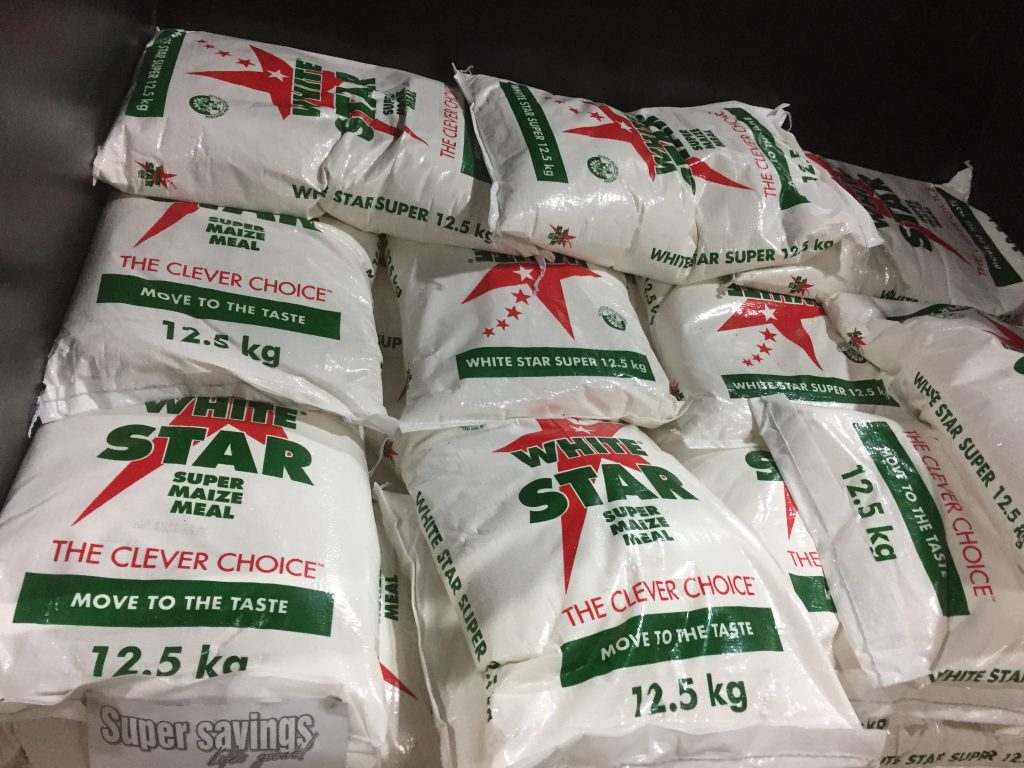 Let’s get back to that question of water and dignity, though. Because on the face of it, there isn’t much dignity to be had in Leandra. The vast majority of residents live in homes like this… if they’re lucky…
Let’s get back to that question of water and dignity, though. Because on the face of it, there isn’t much dignity to be had in Leandra. The vast majority of residents live in homes like this… if they’re lucky…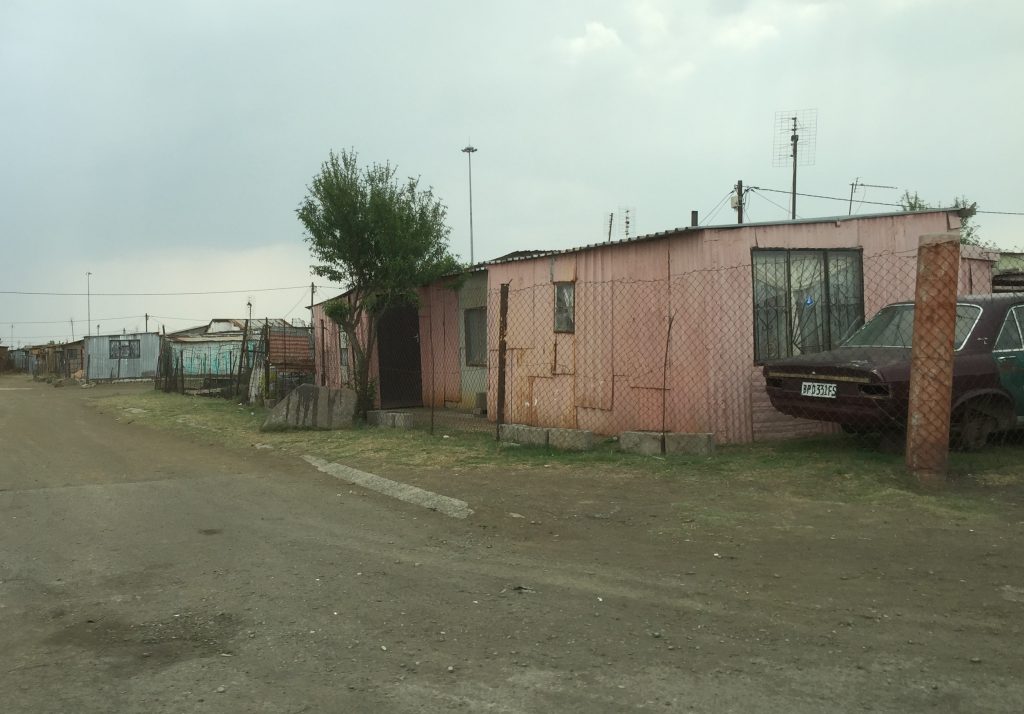 … or like this, if they’re not so lucky…
… or like this, if they’re not so lucky…
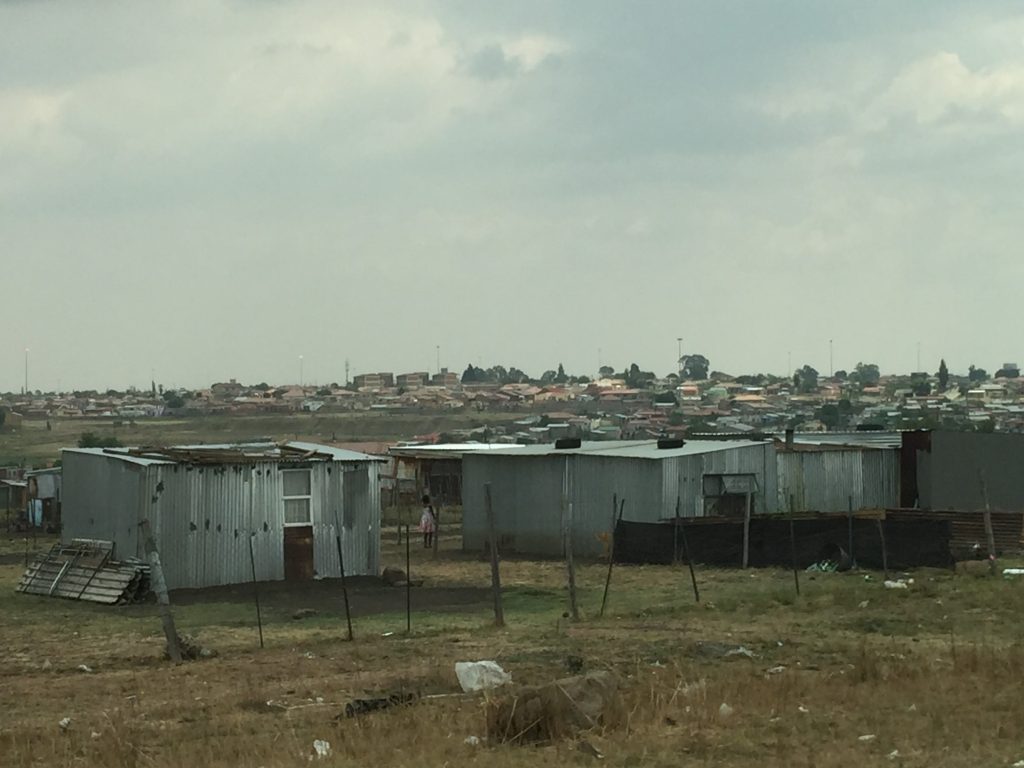 In South Africa, they call it “informal housing”. Shacks built of corrugated metal — or anything else lying to hand — get put up without consent or planning permission on land that has simply been appropriated by people too poor to aspire to anything else. Such homes, as you would expect, do not have proper plumbing or sewerage, of the sort we simply take for granted in the UK. Most people have to walk to get water, and the distances they walk get exponentially longer in times of drought. Little wonder, then, that people here are regularly lectured about saving water by the authorities — via billboard messaging of the sort pictured above, as well as by lessons in school, and so forth.
In South Africa, they call it “informal housing”. Shacks built of corrugated metal — or anything else lying to hand — get put up without consent or planning permission on land that has simply been appropriated by people too poor to aspire to anything else. Such homes, as you would expect, do not have proper plumbing or sewerage, of the sort we simply take for granted in the UK. Most people have to walk to get water, and the distances they walk get exponentially longer in times of drought. Little wonder, then, that people here are regularly lectured about saving water by the authorities — via billboard messaging of the sort pictured above, as well as by lessons in school, and so forth.
Those same authorities, however, seem unwilling or unable to do anything to address the enormous infrastructural difficulties facing communities like this. It’s not just that better facilities are greatly needed: according to residents, even the existing water supply infrastructure is riddled with problems. Old supply pipes get broken or burst, and water is simply lost… In fact, one of the key points to come out of the research here is the awareness that residents do not always know very clearly whether water shortages are the result of actual drought or of these failures in infrastructure…
An added issue here is that people are dependent on piped or stored supplies, in a way that — again — wasn’t necessarily the case in the past. An older resident I spoke to recalled a drought back in the late 1970s which was made worse by a plague of locusts attacking crops. Even then, though, the water deprivation was not as severe as in the recent drought, because people could still find water in ground-springs in certain places. Those springs, he said, simply don’t exist any more.
I’m no expert on groundwater, but I can’t help wondering whether this experience of springs drying up is another consequence of the area being subjected to more industrialised farming. (It’s well established that the water table will drop if land is mined more intensively for water supplies.) Whatever — it’s clear for anyone to see that the ground here is extremely dry, even in a relatively drought-free year like 2017. I put my size 11 feet in the photo above to highlight the scale of the cracks in the landscape. And this is land that should be relatively wet, since it lies close by to the one small stream we found on our reccy of the area…
 A closer look at the stream itself provides further evidence of why only the most desperate of drinkers would consider taking water from this “natural” source rather than from a piped supply.
A closer look at the stream itself provides further evidence of why only the most desperate of drinkers would consider taking water from this “natural” source rather than from a piped supply.
Yes, that green is the actual colour of the water — I dread to think what’s been emptied into it (perhaps from the silos you can see upstream…?). What with the concrete culvert you can also see here, supporting the main road, I was put in mind of Bradford Beck, and all the stories that used to be told about how filthy and toxic it once was….
It’s not just the flowing water that’s polluted, either… Just look at this drainage channel, with the line of rubbish that’s been carried along it, and remains even when there’s no water…
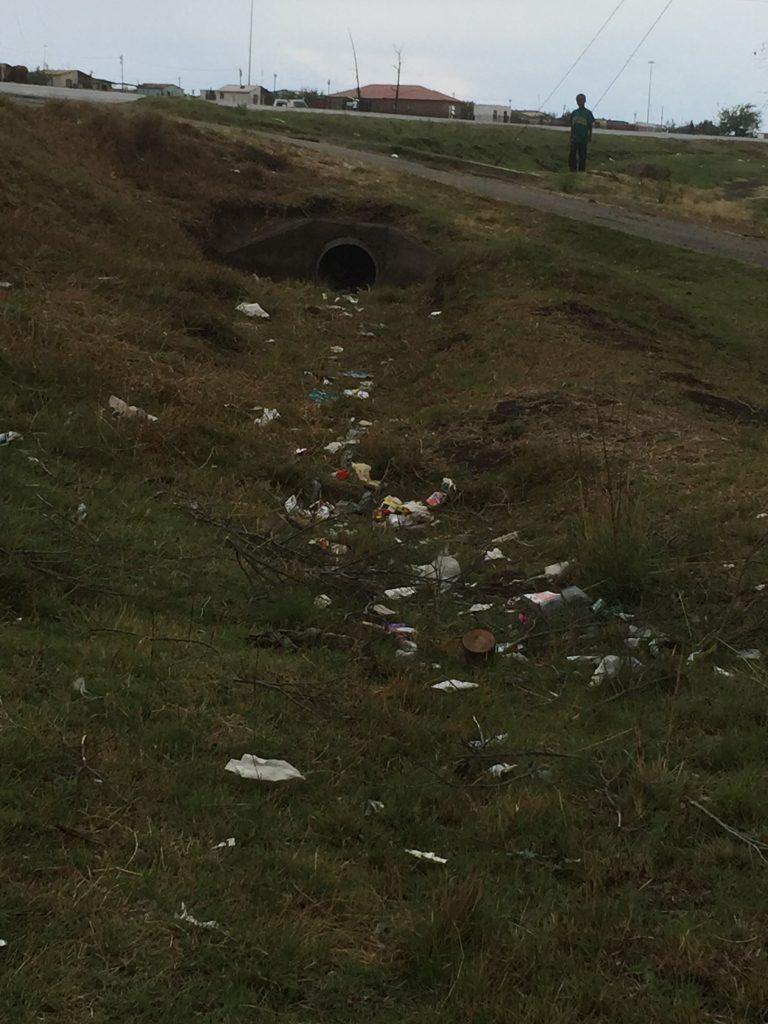 Almost everywhere you go in Leandra, there is litter like this. I guess when the environment is already poor — in every sense of the word — there’s not much incentive to keep it clean. Apparently such littering is a problem all over South Africa, but nobody really knows what to do about it — and in the great scheme of the problems here, it probably doesn’t rank that high on the priority list.
Almost everywhere you go in Leandra, there is litter like this. I guess when the environment is already poor — in every sense of the word — there’s not much incentive to keep it clean. Apparently such littering is a problem all over South Africa, but nobody really knows what to do about it — and in the great scheme of the problems here, it probably doesn’t rank that high on the priority list.
But here is the thing…
The people here do not mirror the landscape and the housing conditions. All the stereotypical expectations you might have about “what poverty looks like” are thrown out of the window when you meet the young people from this community, who have grown up in this environment. Most of them live in “informal housing”, with large families, crammed several to a room, and in normal times (never mind drought) they expect to eat only one meal a day. But they are all immaculately turned out, and indeed very fashion-conscious!
 This is a “selfie” of me with Thato — one of the young people from Leandra who has been particularly involved with the “Patterns of Resilience” project. We’re comparing our Converse Chuck Taylor’s, but beyond that, she’s actually much more stylishly dressed than I would know how to be! (And check out the Chanel logo on the person next to her…) I’m told Thato is also a talented artist in her own right — an amazing drummer and percussionist — and while I didn’t get to see her perform, the project event we attended at the local community centre did conclude with an extraordinary demonstration of collective, local talent by the Umdzabu Cultural Group — some of them pictured here in their more traditional performing costumes…
This is a “selfie” of me with Thato — one of the young people from Leandra who has been particularly involved with the “Patterns of Resilience” project. We’re comparing our Converse Chuck Taylor’s, but beyond that, she’s actually much more stylishly dressed than I would know how to be! (And check out the Chanel logo on the person next to her…) I’m told Thato is also a talented artist in her own right — an amazing drummer and percussionist — and while I didn’t get to see her perform, the project event we attended at the local community centre did conclude with an extraordinary demonstration of collective, local talent by the Umdzabu Cultural Group — some of them pictured here in their more traditional performing costumes…
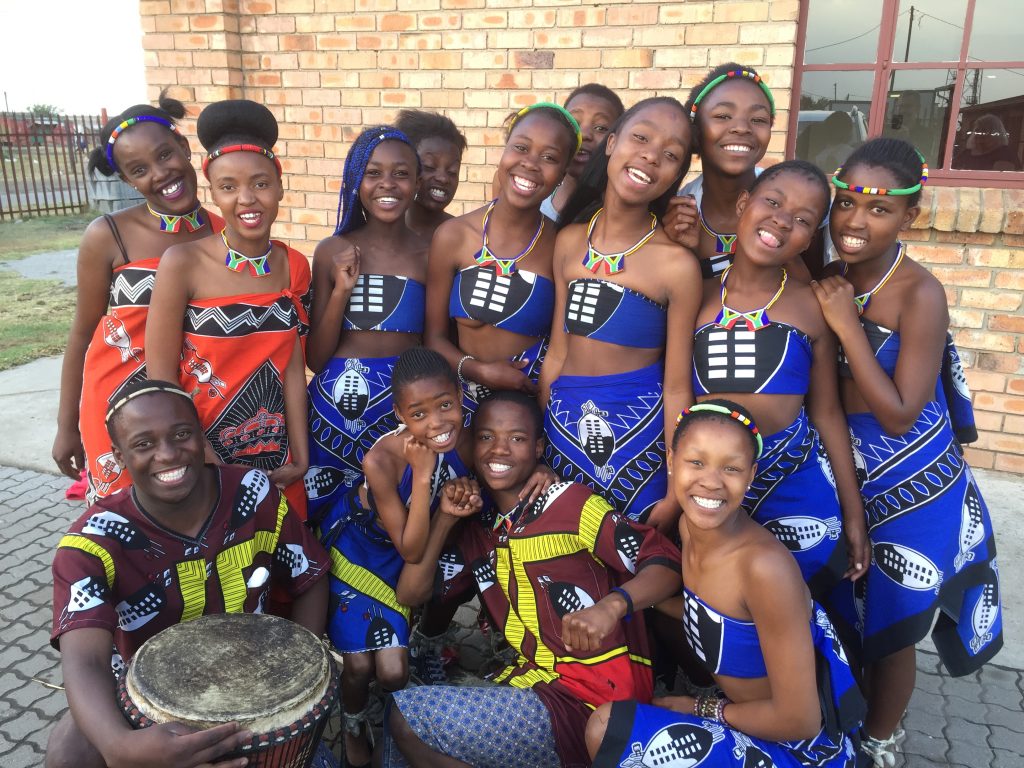 In this picture, these performers look like what they are — kids! — but in performance they were nothing short of awe-inspiring. On the small stage of the community centre, they presented a sequence of drumming, dancing and choral singing — and every possible combination of the three — which ran for over 15 minutes without a pause. Every time a particular sequence finished (a pounding high-kick routine replaced by a quiet, reflective song, for example) they moved from one phase into the other with such tightness and precision that there wasn’t even time for applause. And the sound of the pounding drums and thumping feet was almost overwhelming in that small hall. I was, as you can probably tell, blown away by the whole thing!
In this picture, these performers look like what they are — kids! — but in performance they were nothing short of awe-inspiring. On the small stage of the community centre, they presented a sequence of drumming, dancing and choral singing — and every possible combination of the three — which ran for over 15 minutes without a pause. Every time a particular sequence finished (a pounding high-kick routine replaced by a quiet, reflective song, for example) they moved from one phase into the other with such tightness and precision that there wasn’t even time for applause. And the sound of the pounding drums and thumping feet was almost overwhelming in that small hall. I was, as you can probably tell, blown away by the whole thing!
Now, you might think that I’ve got a bit off the topic of drought here, but far from it. In fact one of the key findings of the research here has been establishing the importance to the community of what they call “positive distractions” in times of hardship. Distractions including singing and dancing, the playing of collective games, and so forth. As one young person summed it up to me: “when children are playing happily, they forget to eat.” True enough — and in times of drought, that means that they forget (at least temporarily) that they can’t eat. I struggled at first to see the significance of simply being “distracted” from the elephant in the room, but when you think about it it’s obvious: the mental and emotional effects of hunger and thirst can impact on people just as can the physical, but if you can find collective ways to keep your spirits up and avoid sliding into depression or despair, you are — quite simply — going to survive longer.
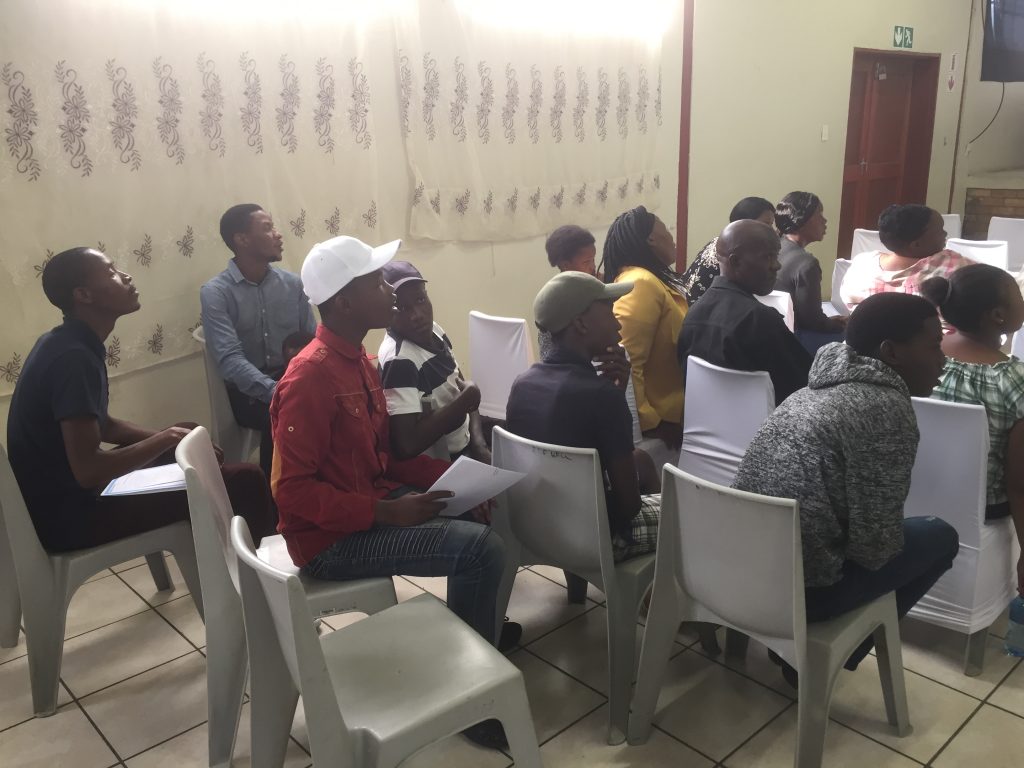 The “Patterns of Resilience” project — run by the remarkable Angie Hart, from the University of Brighton, in collaboration with colleagues at the University of Pretoria and elsewhere — has focused specifically on engaging 43 young people from Leandra as “co-researchers” in learning about resilience to drought. They were even paid something to take part (an ethical way for the research team to put some of their funding into the community itself, while also valuing the young people as co-workers, not just volunteers). The research has included arts-based activities that have helped the young people to process and reflect on their own thoughts, feelings and coping strategies during the recent drought of 2015-16. It has also involved training them up as interviewers, to go and talk to elders within the community, such as grandparents, about their memories of drought over the longer term. Through this process, the young people have learned valuable things about themselves and their community, as well as providing the university researchers with important insights (some of which I’ve already mentioned in this blog).
The “Patterns of Resilience” project — run by the remarkable Angie Hart, from the University of Brighton, in collaboration with colleagues at the University of Pretoria and elsewhere — has focused specifically on engaging 43 young people from Leandra as “co-researchers” in learning about resilience to drought. They were even paid something to take part (an ethical way for the research team to put some of their funding into the community itself, while also valuing the young people as co-workers, not just volunteers). The research has included arts-based activities that have helped the young people to process and reflect on their own thoughts, feelings and coping strategies during the recent drought of 2015-16. It has also involved training them up as interviewers, to go and talk to elders within the community, such as grandparents, about their memories of drought over the longer term. Through this process, the young people have learned valuable things about themselves and their community, as well as providing the university researchers with important insights (some of which I’ve already mentioned in this blog).
I will admit to being sceptical, at first, about the real commitment of some of these young people to the project. And indeed, I did get a sense that some of the (perhaps less engaged) participants interpreted these activities as another version of the familiar encouragement, from the powers that be, that they need to “save water” – through rainwater harvesting, etc. (Let’s not pretend that universities do not have “power” in a situation like this.) But the more I talked to Thato and her peers — some of whom also came here to Pretoria this week for a two-day “think tank” event — the more clear it became to me that the real value of this project has simply been in asking the young people what they thought.
Over and over again, I heard this from them: that nobody has ever been interested in their ideas before, let alone people from overseas (and “England” is a kind of fantasy land to these young people). The very fact of being consulted, they said, and of being asked to think actively about how drought impacts on themselves and their community — rather than simply having “messaging” about behaviour change foisted on them — has changed their own sense of perspective, and enhanced their own sense of value in themselves. That is not nothing. It might not give them any more food or water, but it might — again — help make them more resilient, or even – more activist…
I said at the start of this blog that I saw similarities between Shipley and Leandra. Obviously, these are not nearly as pronounced as the huge differences. But I’ve seen here — in a more concentrated, life-and-death way — some of the same patterns we identified during our Multi-Story Water research. To put it bluntly:
- The authorities perceive a problem that needs addressing… whether of flood risk or, in this case, potential water shortages.
- The authorities try to provide “messages” to local communities about what actions they need to take to protect themselves (in the form of pamphlets, posters, or whatever).
- On the end of such one-way messaging, residents sometimes feel more “talked at” than engaged with. There’s even a sense, sometimes, that they feel condescended to… They’ve perhaps been stereotyped as “hard-to-reach communities” (a euphemism for being deprived or marginalised in some way), but nobody has really tried very hard to reach them.
- Meanwhile, there’s also a justifiable sense among residents that the authorities are not always doing all the things that they could be doing to address the problems – at an infrastructural level. In South Africa, where there is a widespread problem with political corruption, the lack of practical solutions is especially endemic.
- Creative research projects that try to create a more two-way dynamic with local residents, and seek to value their insights and expertise on what it means to live in a particular place, can help to provide fresh insights and change perceptions a little on all sides… What they can’t do, however, is fix the problem…
The problems in Leandra are, quite clearly, massive and intractable. I couldn’t live there, and wouldn’t even know how to begin to. But the people who do live there, for all the life-and-death difficulties they face, have developed very real forms of personal and collective resilience that need to be valued, honoured, and paid attention to.

